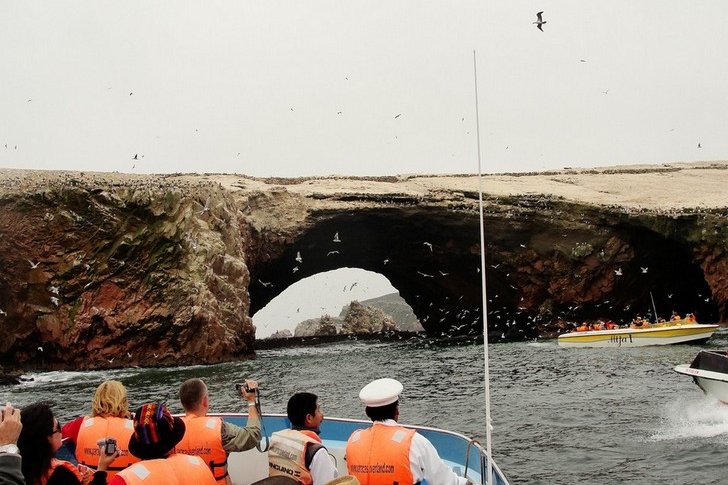Peru is still a lost world for many tourists. The life of the Amazon and ancient civilizations keeps many mysteries and secrets. They are what make Peru so attractive. Here is a unique flora and fauna, good ocean beaches, painted like a desert carpet and mountains, in which the largest birds on the planet live - the condor has a wingspan of about three meters. Real fantasy to see him above you in five meters.
The Sacred Valley of the Incas in the Cusco region is the main attraction of the country. There is a railway to the ancient city of Machu Picchu, but you need to know that access to tourist groups is limited. Only 400 people can visit it per day. The mountainous part of Peru is extraordinarily beautiful, in the transcendental city you just want to be silent from the magnificence. The only trouble that can happen is mountain sickness. Stock up on leaves and tea from Coca - it perfectly relieves its symptoms.
What to see in Peru?
The most interesting and beautiful places, photos and a brief description.
- Machu Picchu
- Lake Titicaca
- Colca Canyon
- Nazca desert
- The floating islands of the Uros
- City of Cusco
- The ancient city of Pisak
- Valley of the Pyramids Tucume
- Gokta waterfall
- Andean candelabra
- Inca Trail
- Manu National Park
- Oasis of Huacachina
- Ancient city of Chan Chan
- Plaza de Armas (Cusco)
- Cathedral of Lima
- Fortress of Saxuaman
- Historic center of Arequipa
- Salt mines of Maras
- Ballestas Islands
Machu Picchu
The ancient Inca city of Machu Picchu was discovered by researchers only in 1911. For more than 400 years, nothing was known about the city, and the inhabitants of the Inca country mysteriously disappeared in the 15th century. The winter residence-sanctuary of the ruler of Pachacutec is located at an altitude of more than 2000m. There are only 200 buildings in the city. Construction methods, stone processing methods are still a mystery.

Lake Titicaca
Lake Titicaca keeps many secrets in its waters. Despite the fact that it is located at an altitude of 3812m, sharks and other marine animals are found here, and the rocks have marks of former tides. In 2001, divers discovered the underwater city of Wanaku. The lake is navigable. You can order a two-day tour and visit Puno, explore the reed islands, the village of the natives.
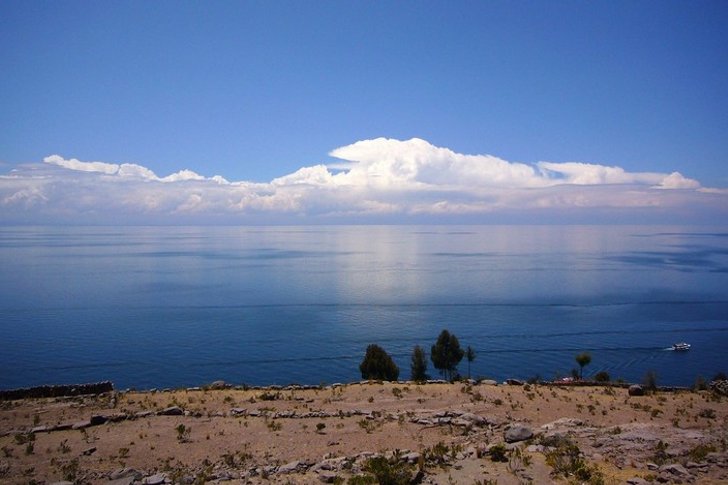
Colca Canyon
Kolka is the deepest canyon in the world. Its maximum depth is 4160m. You can climb to the highest point of the Cruz del Condor canyon. From the observation deck, you will get beautiful pictures of condor eagles. The slopes of Kolka are used by residents for agriculture, creating complex systems of terraces. Tourists also visit the valley of volcanoes and geothermal springs near Chivay.

Nazca desert
In the Nazca desert, not only rains are rare, but also winds. The unique microclimate allowed the preservation of huge geoglyphs. The reason for their appearance, scientists have not yet figured out. Alien or religious signs, just the fantasy of a group of ancient revolutionary artists - no one knows. You can view them only from the window of an airplane or from the observation tower of the Panama American Highway. From here you can see 3 pictures.

The floating islands of the Uros
There are about 40 floating islands on Lake Titicaca. These man-made pieces of land were created by the Uru people in case of a war with the Incas. After the fall of their civilization, the river people remained to live on the straw islands. Not only the soil under your feet consists entirely of reeds, but also Indian houses, boats, and household items.

City of Cusco
The navel of the earth, as the word Cuzco is literally translated, attracts tourists from all over the world. The former capital of the Incas combines the ancient masonry of the natives and the Spanish colonial style in architecture. Cusco is an open-air museum filled with original local flavor. Every street of this city is under the protection of UNESCO.

The ancient city of Pisak
Just 30 km from Cusco is the ancient city of Pisac. Its streets are divided into quarters, stone houses and the largest ancient cemetery have been preserved. The city is divided into two parts - the temple and the city. A staircase carved into the rock leads to the sacred buildings. Under the temple mountain of Pisac there is a small settlement of Indians.

Valley of the Pyramids Tucume
The pyramids of Tucume are built of clay stones. The highest reaches 40m. Corridors with frescoes and bas-reliefs, courtyards, storage rooms have been preserved. There are 26 temples in the Valley of the Pyramids. Researchers believe that this abandoned sanctuary was popular in antiquity and was a place of pilgrimage.
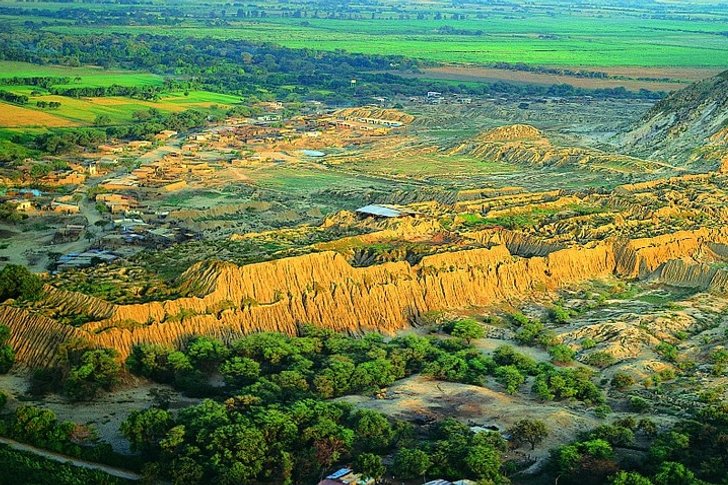
Gokta waterfall
Gokta falls from a height of 771m in a double cascade. The most beautiful sight here is during the rainy season. A rain forest grows near the waterfall, in which hummingbirds, toucans, spectacled bears and other rare animals live. The waterfall was discovered in the Amazon in 2002. In the nearby villages of Coca or Cocachimba, you can take a guide to climb up to the falls.
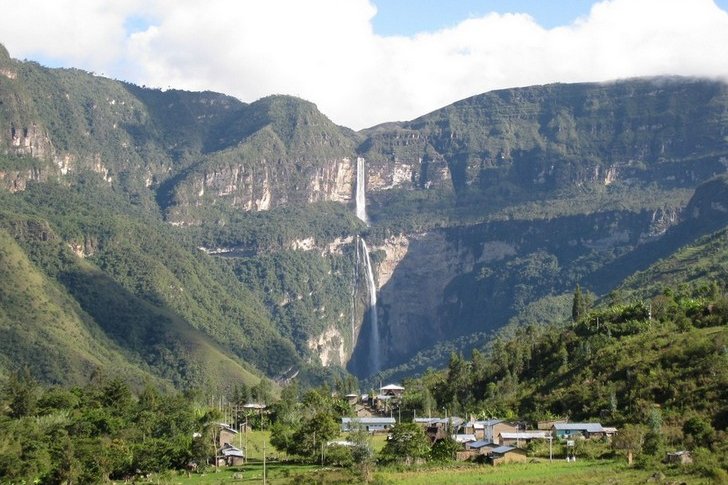
Andean candelabra
The Paracas Peninsula is distinguished by a huge geoglyph-chandelier. Its length is 128m and width is 70m. The location of the drawing on the Pacific coast has led archaeologists to suggest that it served as a lighthouse and was made much later than the Nazca drawings. In the nearby city of Pisco, there is a boat for a trip to another Peruvian mystery.

Inca Trail
Fans of active tourism can go hiking along the Inca Trail. It stretches 39 km and was used by the Indians exclusively for religious purposes. This route is one of the five best in the world. It passes through the cloud forests to the top of Machu Picchu, includes a change in climatic zones and requires prior acclimatization.

Manu National Park
The Manu Nature Park is divided into three zones: open to the public, scientific and main, where there is no access. A huge number of species of birds, mammals, insects and plants live on the territory of the reserve. The reserve organizes river rafting to the tribes of the Amazon, and also offers to spend the night on the territory in eco-capsules.

Oasis of Huacachina
A little over 100 people live permanently in Huacachina. This is a real classic oasis with a lake and palm trees, located near the city of Iki. There are high dunes around, which attract fans of buggy and sandboarding. Some dunes reach 150m. The best time here is from May to August.

Ancient city of Chan Chan
Chan Chan was an ancient metropolis. Its area is 20 sq km. Its clay walls were decorated with gold and patterns. Behind them it was possible to hide not only from enemies, but also from heat or cold. The houses had a ventilation system. Pools for collecting water, administrative buildings, temples have been preserved.

Plaza de Armas (Cusco)
Plaza de Armas or the square of arms is the main attraction of the city of Cusco. It has a lot of hotels, souvenir shops, restaurants. Here you can hear the sound of the largest bell in South America from the Cathedral. On the square, colonial-style buildings and Inca masonry have been preserved.
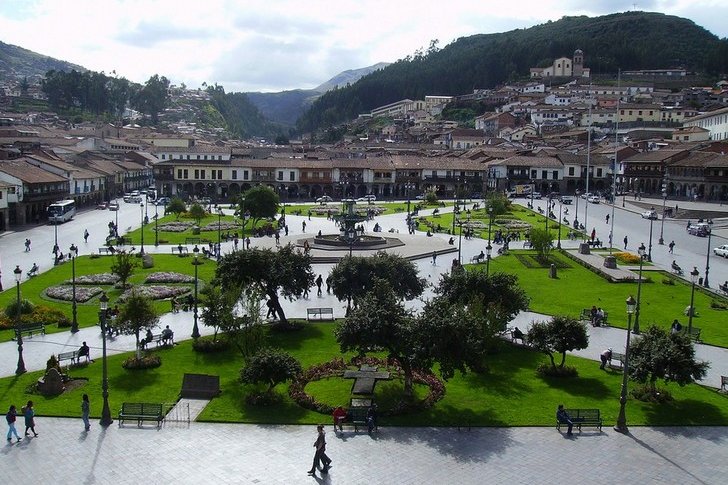
Cathedral of Lima
The cathedral was consecrated in honor of St. John. Church construction began in 1535 by the conqueror of Peru, F. Pissarro, whose sarcophagus is kept in the chapel. Three times the building was destroyed by earthquakes. The current temple built in 1746 impresses with its white and gold walls and Gothic vaulted ceilings. There is a functioning museum inside the church.
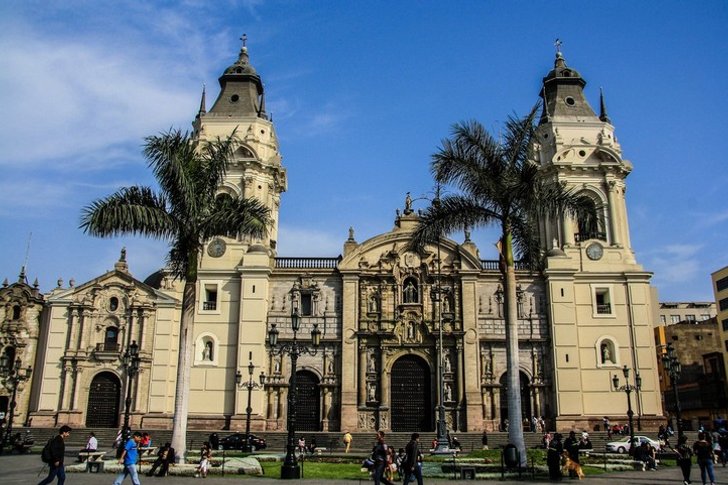
Fortress of Saxuaman
The special masonry of the fortress causes bewilderment of modern researchers. How huge blocks could be laid out in a zigzag manner, as if fitting corner to corner. Some blocks are much larger than human growth. Behind the three main walls in the center of the circle is the Inca stone calendar. Under the fortress, a system of catacombs was discovered that led to the city and the temple of the sun.

Historic center of Arequipa
The center of the second largest city is listed as a UNESCO heritage site. The colonial-style buildings are built of white volcanic stone. Tourists are attracted by the Cathedral, the monastery of Santa Catalina, decorated with frescoes and murals, the Casa del Moal mansion with a patio, the Square of Arms.
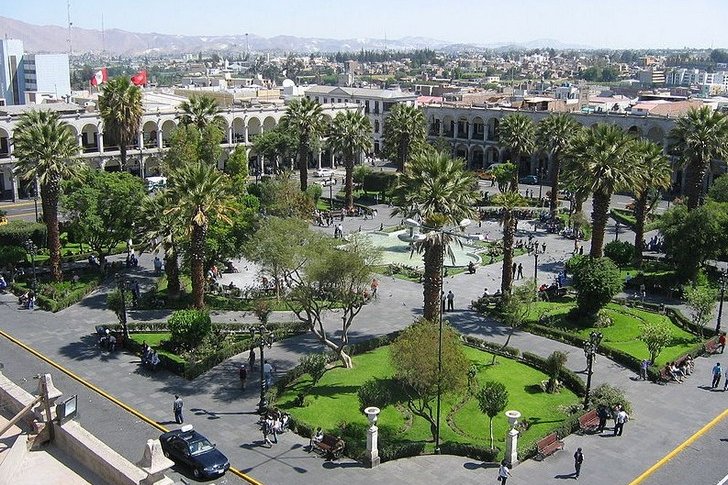
Salt mines of Maras
Near Maras, stone terraces have been preserved, which the locals use to extract salt. Water from a salt spring enters artificial pools and evaporates naturally. If desired, tourists can participate in the mining process. In the dry season, salt is literally rowed with a shovel.

Ballestas Islands
The three rocky islands of Ballestas are home to penguins, sea lions, seals, gannets, pelicans, etc. Sometimes whales and dolphins swim up. You can visit here only as part of an excursion group. Boats run regularly from Pisco. You can’t go ashore, but the animals are already clearly visible.
